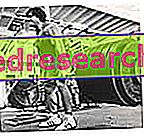Scoliosis appears as a lateral, permanent deviation of the vertebral column whose main component (cause?) Is the rotation of the vertebral bodies
CAUSES
Genetics
Endocrine: linked to puberty
Postural: vice, attitude, paramorphism
Neurological: neuro-muscular imbalance between the spinal muscles on one side compared to the other
Morphological alterations of the spine:

Attitude: consolidation of the vice; while removing the cause, the postural attitude different from the norm does not disappear. It is important to bring the subject to the awareness of the result to be achieved.
PARAMORPHISM: morphological alteration that is consolidated at the muscular and tendon level, and requires a specific muscular toning gymnastics to recreate the lost balance.
DISMORPHISM: morphological alteration that also affects the skeletal system: in fact, in these cases, there is a rotation of the vertebral bodies. It cannot be completely corrected either with specific gymnastics or with the use of corsets.
LOCATION:
Lumbar Scoliosis
Dorso-lumbar scoliosis
Dorsal scoliosis
Cervico-dorsal scoliosis
Usually there are two curves; the most frequent have right dorsal and left lumbar convexity. If the first has a large radius of curvature, the second automatically forms to recreate the equilibrium situation.
EXAMINATION OBJECTIVE:
Shoulder alignment
Symmetry of size triangles
Presence of hump bending
Protrusion of a scapula relative to the other
Alignment of the iliac crests (attention that does not depend on an asymmetry of the lower limbs)
CLASSIFICATION ON THE BASIS OF GRAVITY
Location:
dorsal
dorsolumbar
lumbar
Bend angle:
> 45-50 ° surgical treatment
30-45 ° nonoperative treatment with the use of bust plus physical activity
25-30th physical activity
PURPOSE OF THE PHYSICAL ACTIVITY FOR SCOLIOSI
Specific physical activity alone does not correct a dysmorphism such as scoliosis, but it is necessary to prevent a worsening, acting on the general toning and on muscular stretching to favor the recovery of symmetry.
GENERAL PRINCIPLES OF CORRECTIVE TECHNIQUE
Like all physical activities and sciences, corrective gymnastics must also be subject to certain principles.
First principle
Research of the triggering and aggravating causes of morphological alteration. It is necessary to make parents and children aware of the causes that led to the alteration in order to implement, through their education, a conscious preventive action.
Second principle
The subject's awareness of his own bodily attitude (alteration); only in this way can he manage to correct himself and actively collaborate during everyday life. (use for this purpose the sensory ways of sight and touch)
Third principle
Promote relaxation and relaxation to have precise, effective and well-localized movements. It is important that the subject has an exact awareness of which muscles are involved in the movement and which ones must be left at rest.
Fourth principle
Unblock the segment and then tone up: perform mobilization exercises first and then tone up, so as to re-balance the reactivated muscle groups with mobilization. In the case of asthenic or hyperlactic subjects, only toning is used.
Fifth principle
Hypercorrection gymnastics; the movement must always exceed the limit of the normal position. Asthenic and hyperlactic subjects are still exceptions.
Sixth principle
Movement choices to shorten the stretched muscles (complete contraction and incomplete distension) and to lengthen the shortened muscles (incomplete contraction and complete relaxation); in this way it is possible to correct the muscular imbalance that determines the alteration.
Seventh principle
Few exercises, well chosen and well-dosed. Specificity of exercises depending on the alteration that the subject presents, dosed according to the actual capacities. Repeating these exercises is also useful for exercising muscle memory. Negative side: repetitiveness creates situations of boredom.
Eighth principle
Graduate the progression of the exercise, from the simple to the complex, from bland to intense.
Ninth principle
Move from the supine position to the sitting position, on your knees, until you reach the upright station. It is best to start from a gravitational discharge position, up to the normal upright position.
Tenth principle
Movement rhythm: neither too slow nor too fast, the respiratory rhythm is ideal. Movements that are too rapid lose precision, too mild generate poor blood circulation.
It is however understood that the mobilization exercises are carried out at a more rapid pace, those of toning, more slowly.
Eleventh principle
The respiratory gymnastics must always intervene in the lesson of corrective gymnastics because all the alterations of the trunk involve a respiratory insufficiency.
Twelfth principle
Periodic monitoring of the child so as to be able to evaluate the results obtained and be able to adapt the exercises based on the progress achieved.



